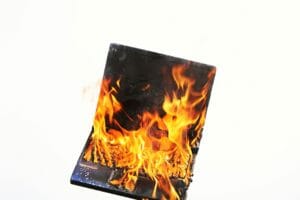Product liability claims arise when serious injuries and wrongful deaths are caused by dangerous or defective products. Claims can
When a product is defective and causes an injury or even death, there may be a product liability claim that can be brought against the manufacturer or seller of that product. All entities in the distribution chain of a product have a responsibility to design, build, and market a reasonably safe product, or ensure that proper warning labels are present if there is an unavoidable danger in the regular usage.
There are no federal product liability laws, meaning each claim is handled based on state laws. Usually, these types of claims fall under the theories of negligence on the part of the designer or manufacturer, strict liability, or breach of warranty.
When reviewing these types of cases, there are generally three types of liability that we look for.
Manufacturing Defect
If the problem with the product occurred during the manufacturing or building of that product, then the liability would be on the manufacturer. For example, a factory may have made a mistake in putting together a product, which then caused the product to cause injury in a user. When there is a hazardous or poisonous substance that is found in a product, it is often a manufacturing issue.
Design Defect
A design defect varies from a manufacturing one because the flaw did not occur when the product was made, but rather the error was in the actual design of the item. For example, if a medical implant is designed incorrectly, it could cause harm to the patient that uses it. As another example, car manufacturers may face liability claims if the design of a specific vehicle causes it to catch fire easily after an accident.
Labeling or Marketing Defect
All products, especially those that may have inherent dangers such as a hairdryer, must have proper labeling that gives clear instructions and warnings as to the danger of using that item. If there is any risk at all to using a certain product, it must have explicit labeling that identifies the hazard. There must also be instruction on how to avoid the danger, and if possible, pictures may be used to show consumers how to handle the item safely.
A failure to warn consumers of a hazard would be an example of a strict liability case. In these types of situations, anyone in the distribution chain, including sellers, may be held liable for putting a hazardous item in the hands of consumers without proper warning or instruction.
With multiple product recalls coming out each day, it’s a reminder that consumers should pay attention to the safety of each item they use. If you suffer an injury due to a defective product, and you believe that the defect is in the manufacturing, design, or improper labeling of that product, you should call an experienced personal injury attorney. You may be eligible to receive financial compensation based on your loss or injuries.
References:
What is Product Liability? (n.d.). Retrieved from https://injury.findlaw.com/product-liability/what-is-product-liability.html
Three Types of Defective Product Liability Claims. (2015, September 14). Retrieved from https://veracityinsurance.com/blog/product-liability-three-types-of-defective-product-liability-claims